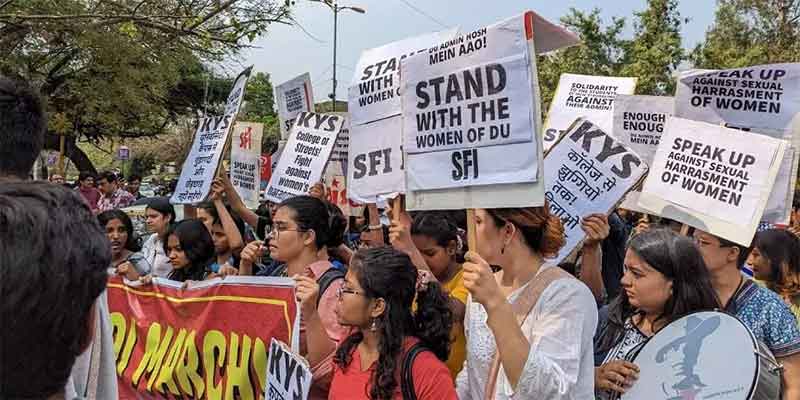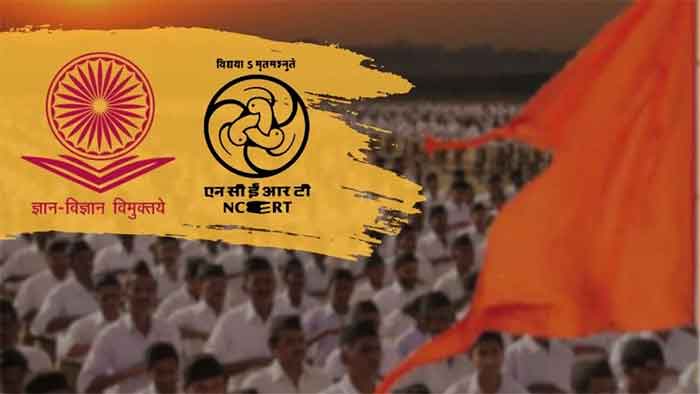
Amid an unprecedented corona virus crisis across the world, in India, a discussion about online education has now acquired paramount importance in terms of reliance on imparting knowledge virtually, compared to the conventional method of face-to-face teaching.
Our education structure is different and only limited people have access to digital media. We can enter into this model of education if all the students have access to internet and computers. But that is not the case.
With a view to understanding the educational problems under lockdown, I would like to present my viewpoints in the wake of consultations with a number of people from academia into four parts:
- Status of online education under lockdown.
- Status of conventional education.
- Effectiveness of online education with some suggestions in terms of alternatives to it.
- Conclusion
I. Status Of Online Education Under Lockdown
Universities, colleges and schools across the country have been closed since March 16, 2020 when the Union Government announced a countrywide classroom shutdown as one of the major measures to contain the outbreak. Later, a nationwide lockdown was announced wef. March 24, 2020 which has now been extended till May 3, 2020.
According to UNESCO, as of April 14, 188 countries around the world have closed schools nationwide, affecting over 1.5 billion learners and representing more than 91 per cent of total enrolled learners. The world has never experienced such a dramatic impact on human capital investment and the consequences of COVID-19 on economic, social and political indicators.
Although majority of the governments are making substantial efforts to ensure online educational opportunities, their capacity for the most disadvantaged populations varies enormously. The responses vary widely by level of income: less than 25 per cent of low-income countries currently provide any type of remote learning, and of these, the majority are using TV and radio.
In contrast, close to 90 per cent of high income countries are providing remote learning opportunities, nearly all of which are provided online. A lower share of lower-middle income countries – 66 per cent – offers online or broadcast remote learning opportunities to their students. But even when governments of low and middle-income countries try to offer online education, they will not be able to reach most students: Only 36 per cent of the residents of lower-middle income countries have access to the internet.
The learning gap between rich and poor will likely grow during the pandemic, not just between high and low-income countries, but also between high and low-income regions and communities within countries.
There are some predictable risks. One very real risk is exacerbating existing inequities. Today for students who do not have access to technology, books, food or literate adults at home, remote learning runs the risk of drastically widening the gap between haves and have-nots of those resources.
A panel appointed by the UGC has recommended that the academic session in universities and higher educational institutions can be started from September, 2020 instead of July. 2020 in view of the COVID-19 situation in the country.
A survey conducted by the University of Hyderabad (UoH) shows that the majority of students don’t have proper access to the internet; the university has decided not to impose online classes on their students and faculty at this juncture. It should be noted that UoH is a top-ranking university in India. Hundreds of universities across India are nowhere when compared with that.
Many institutions swiftly and efficiently shifted online after the lockdown but many students have complained about having little or no access to the internet and have raised their issues with their colleges too. This points out that the results of the survey could easily reflect the conditions in the rest of the country and could be something that the state and centre should take into consideration as well.
The situation of every student is different, including the rate of COVID-19 infections. Also, some universities may be small and be able to provide online facilities to all students. Others have thousands of students and fewer resources. We cannot mandate one standard solution to all.
School education
Apart from university education, the school education has a different picture of its own. The lives of children are now heavily altered without play and peers and schools. In India, 41 per cent of the population is less than 18 years of age. Closures of school may protect the school children from corona virus but the impact on them is going to be detrimental. Children are losing out on their daily interactions with their schoolmates and teachers and it will be long before they go back to school.
Learning is certainly going to be disrupted, more so for children whose parents are not literate or who do not have access to internet-based learning. There is no certainty as to when schools will resume; a prolonged gap is going to affect children’s interest and ability to go back to learning. If schools continue to be shut down for a long period, education is going to be a casualty.
ICT is emerging as an alternative, its potential as a tool to reach education to primary and secondary grade children is being explored. It may look a good option for the middle class children, but not for others.
The lack of android phone at every household and availability of quality e-materials in regional languages are another bottleneck.
School closure also means loss of the midday meals. This, for poor children is going to be distressing, furthering the existing hunger and malnutrition. It is the poor and marginalized children who are going to be most affected by the lockdown. The impact of the pandemic on children is insidious and going to be long lasting. The visuals of huge groups of migrants walking back to their villages, with children in tow, is heart-wrenching.
International Labour Organization (ILO) estimates that 40 crore workers in the informal economy are at risk of falling deeper into poverty during the corona crisis. Loss of livelihood is going to leave a deep impact on children, there will be less to eat, more children will be pushed out of school and there will be many more children who will go to work.
Some children have already started working with their parents on farms, and in non-farm activities; some are found assisting in small grocery shops or selling vegetables in local markets. The situation is dire, the impact of the pandemic and the lockdown on children has to be understood and acted upon.
II. Status Of Conventional Education
Under corona pandemic lockdown, if we talk about conventional education, it does mean that the plight of the majority of the Indian children along with the children of the other countries of the world needs to be seriously taken into account.
The world today faces a global learning crisis, with the 2030 Sustainable Goals for Education far from reaching the goals. Though many of the world’s children are in school today, 263 million children remain without access. For the children and young people that are in school, they are often not really learning.
Poor quality schooling is an issue in all countries but is more pronounced in developing countries and for the most marginalized children. In India too, the quality and pace of the learning of the majority of the children in public education system is very very slow. One can see ASER Reports.
One factor for the global learning crisis- though certainly not the only factor –is that many countries have not invested sufficiently in teachers for their expanding school systems. Surprisingly, there have been dropping proportions of trained teachers in a number of world regions at both primary and secondary levels, this drop is especially pronounced in Sub-Saharan Africa, where just 64 per cent of primary school teachers and 50 per cent of secondary school teachers have received appropriate training.
If we talk of absence of 4Cs – communication, collaboration, creativity and critical thinking – in the online learning approach, all these are equally absent in the present day classroom teaching-learning process. Learning and teaching are not two sides of the same coin.
Learning is a process that takes place in a living organism; as a result of it, the behavior of the organism changes. This process is the object of psychological research. The role of teaching, on the other hand, is to organize the environment in such a way as to enable learning to take place. In order to organize the environment, we must know the conditions under which learning takes place. Instruction, according to its own logic, may reject certain learning activities (such as indoctrination or conditioning) and approve others (such as learning by discovery or learning based on understanding).
Once instruction has approved certain kinds of learning, psychological research into them should dictate the activities of instruction (Lamm, 1976, p. 188, 190). If all these are missing for the children, school is rigid, uninteresting and ultimately alienating. The result is the mismatch between the learner and educator. But it is not the children who are mismatched to the schools; rather the schools are mismatched to the children.
This divergence between our children and our educational practice needs a drastic educational reform that will bring the classroom to accord with society. Only by revising educational practices, can we close this gap, and reunite our schools with our children and the rest of our country. The constructive theory provides a foundation for such changes, and the time to implement them is now.
Revisit the policies
The upheaval caused by the novel coronavirus should inspire a basic review of past choices and policies. Some of these policies had gained so much acceptance that one felt there was no point in questioning them.
Public health and education are two areas in which India took decisive turn in the 1990s. When several states decided to stop giving permanent appointment letters to doctors and teachers in the mid-1990s, they were guided by an ideological shift at the national level towards allowing health and education to be opened for private enterprise. This was viewed as a major policy reform, a necessary part of the bigger package of economic reforms. They were presented as a package, offering little choice for specific areas.
The new buzz has been public-private partnership. It covered everything from roads to schools. The form it took made it amply clear that the state would take a back seat after issuing a set of rules for private operators while the state’s existing infrastructure is appropriated and will gradually shrink. Soon enough, cost-effective measures became the priority in both health and education.
Chronic shortage of functionaries became the norm while young persons who got qualified had to wait for years for vacancies to be announced, and/or working on short-term contracts, with little security and dignity, that became common.
As we begin to imagine the post-coronavirus scenario, a key question to contemplate is whether we should revisit the policies put in place ever since the 1990s. Some will doubtless argue that the clock cannot be put back and that we should not waver from the path we had chosen, no matter what hardships people have to endure.
Certain policies were specific to domains such as health and education. Others were more like frameworks within which policies for specific areas emerged and evolved. One such framework had to do with villages. Special measures were designed to select the ‘best’ among rural children and make them competitive enough to survive in the urban world that was treated as mainstream.
III. Effectiveness Of Online Education With Some Suggestions In Terms Of Alternatives To It
I would like to thank my friends who include teachers, teacher educators, academicians and social activists for sharing their personal experiences on the basis of which I have been able to contemplate on online education during corona lockdown. Though I was looking for some alternatives to online education during lockdown, I have received mixed responses and reactions and some suggestions in terms of alternatives to online education during lockdown.
Deliberations in the present context remind us that a child’s learning occurs in many different ways : in whole group activities, in small group situations, in one-to-one exchanges with the teacher and other children, and as an individual. A fundamental aspect of a supportive classroom is that the teacher attempts to monitor learners in all of these learning situations and attempts to offer support which meets the diverse needs of each learner.This is almost impossible in online education.
It is important to keep mind that technology is merely a learning medium. It can be a bridge, never a destination. Computers may help the students learn but it cannot make the students learn. If learning is the heart of the world of education, even in digital form, the teacher is its lifeblood. In fact the teacher, not the technology, is the key to the future. Without good teachers we have no future.
A social activist from Telangana couldn’t help expressing vividly that there in Telangana, more so in Hyderabad, at the level of primary education also, mostly in private schools distance teaching-learning is sought to be promoted, in the context of the lockdown. The schools are interested and a little worried about uncertainties to collect their fees for the next academic year too. Telangana govt. is not encouraging webinars or online conferences as of now but some attempts in this regard are in progress. Both Telangana and Andhra Pradesh already decided to promote all children upto standard IX.
Big guns are advertising in the media and a market for education in digital mode is being pushed. India cannot afford to provide primary education in virtual mode. Even those who afford will not be benefited except a small proportion of children from elite families where parents are highly educated. The poorer and rural children will surely suffer, as even now, with direct face to face teaching, they are learning and performing poorly, as so many NCERT surveys and ASER reports indicate.
Online education is being proposed not merely as an interim solution, but as a possible substitute to conventional academic mode. If it is pursued after the lockdown is over, it needs to be resisted by teachers as well as parents. Concluding his views the activist says that we already have a pedagogic and political culture of silence and suppression of dissent. And it may be aggravated in coming times, we need to keep eyes open, and observe how all this evolves.
Dr. Anil Kumar Roy, General Secretary, Bihar Social Science Academy , opines that since the government functions as a manager of the system, not only corporate institutions, but the government also advocates online education. This is clearly visible in the New Education Policy.
Coronavirus lockdown is an excuse or just an alibi to introduce online education. In the absence of corona, certainly it might have faced some obstacles to go ahead, but corona pandemic has provided an ample opportunity to the dispensation to go ahead with online education unhindered.It goes without debate that online education cannot replace conventional mode of teaching-learning process. Dr. Roy further suggests some alternatives to it: in the prayer-time assembly quick-result-test should be administered on children every day; physical distancing should be maintained in the classroom; games should be allowed without physical touch and sanitizers and mask should be provided to the children.
Some teacher educators opined that people with disabilities mostly fall under the category of vulnerable groups. In academia, people with disabilities face many problems related to accessibility and learning resources. In a country like India, major population resides in remote areas having less connectivity to internet.
Conclusion
To conclude, a question automatically crops up: How far ‘stop classes without stopping learning’ may be successful in India? Some teachers may grow stressed dealing with the challenges of online teaching including the lack of face-to-face interaction and sometimes unreliable technology. During this short period of time, the challenges would be two-fold: online platforms should include multiple options for meeting practical teaching needs, such as synchronized video and voice for group learning and classroom interactions. However, in poorer or more rural areas, this would be limited by the technological facilities or even the uninterrupted availability and cost of electricity.
We need to think again and again how education can be effective for students’ overall cognitive and non-cognitive development with e-learning. It seems impossible, for real learning occurs only when the students investigate a concept, find information, discuss it and create in their own way.
The present education system and the dynamics of a student-teacher relationship are likely to change in the near future. With the way that countries are closing their borders across the globe, Indians in foreign lands are returning to their homeland, and rural migrants returning to their villages, there might be a need to formulate the policies for the majority of the students. While fighting with the virus, we should not forget the invisible children. Children may look less vulnerable from corona but may feel the heat heavily.
We cannot wait for the crisis to be over before we reach out to the children. Children should be ensured nutrition, protection and continuity of education. Discussion on policy, strategies and line of action ought to be continued.
(The author has been associated with teacher education and Educational Research for three decades; went to ASU, USA for higher studies in teacher education. He is an executive council member of All India Forum for Right to Education-AIFRTE, and has been an office-bearer of Indian Social Science Academy – ISSA, and its Bihar unit.)
SIGN UP FOR COUNTERCURRENTS DAILY NEWS LETTER

















































